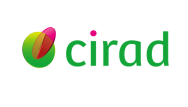Submissions
Submission Preparation Checklist
As part of the submission process, authors are required to check off their submission's compliance with all of the following items, and submissions may be returned to authors that do not adhere to these guidelines.Copyright Notice
The authors retain their rights to the articles published in the Revista Latinoamericana de Estudios Rurales. Articles published in the journal are available in open access for downloading and sharing according to the Creative Commons Attribution-NonCommercial-ShareAlike 4.0 International License.
Privacy Statement
The names and email addresses entered in this journal will be used exclusively for the purposes stated by this journal and will not be available for any other purpose or other person.






















